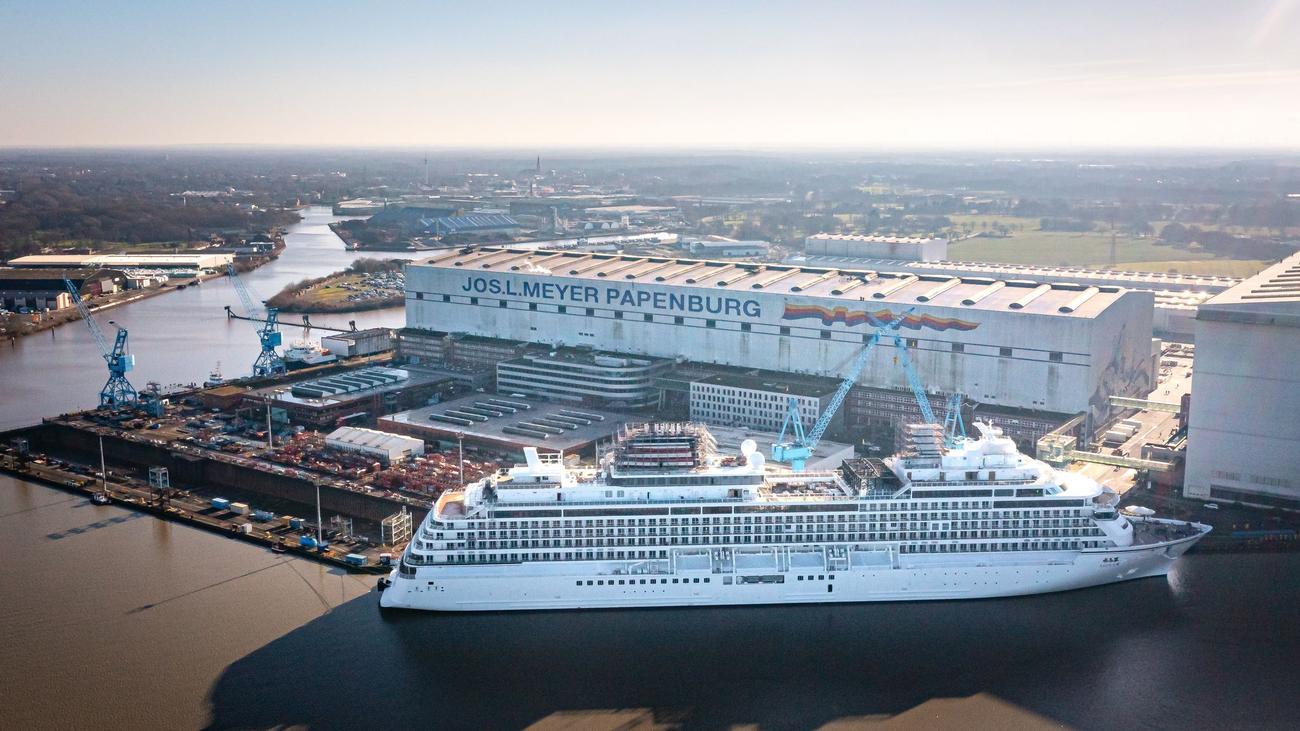
Meyer Werft Prepares for the Conveyance of "Asuka III" Down the Ems River
The renowned Papenburg-based Meyer Werft shipyard is gearing up for the highly anticipated conveyance of its latest cruise ship creation, the "Asuka III." This vessel, a testament to German engineering prowess, is slated to depart the shipyard’s harbor in the early hours of Sunday morning, around 5:30 AM, embarking on its journey down the Ems River towards the Dutch port of Eemshaven, as officially announced by the shipyard. The estimated arrival time at Eemshaven is projected to be sometime between Monday evening and Tuesday morning. However, shipyard officials have cautioned that the meticulously planned schedule remains subject to potential alterations due to unforeseen weather conditions.
The conveyance of these massive vessels down the narrow and winding Ems River is a spectacle that regularly draws significant crowds. The local population, alongside tourists and ship enthusiasts, are expected to line the banks of the river once again to witness this complex maritime maneuver. The "Asuka III," like its predecessors, will be carefully guided along the Ems by powerful tugboats, which will essentially pull the cruise ship backwards. This unusual method is necessitated by the river’s limited width and the need for precise control during the transit.
A critical component of the ship’s safe passage involves the complete closure of the Ems barrier at Gandersum. This closure results in the damming of the river, a necessary measure to ensure sufficient water depth for the large vessel to navigate the shallower sections of the Ems. This process, while crucial for shipbuilding operations at Meyer Werft, has become a point of contention, drawing criticism from environmental conservationists.
These conservation groups voice strong objections to the practice of damming the Ems for ship conveyances, highlighting the detrimental impacts on the delicate river ecosystem. They argue that the artificial water level manipulation disrupts natural habitats, potentially harming aquatic life and altering the river’s natural flow patterns. These concerns underscore the ongoing debate surrounding the balance between economic activity and environmental preservation in the region.
The "Asuka III" marks a significant milestone for Meyer Werft, as it represents the first vessel constructed by the shipyard for the Japanese cruise line, NYK Cruises. This partnership signifies Meyer Werft’s expansion into new markets and its ability to cater to the specific requirements of a diverse clientele. The ship itself is an impressive structure, measuring 230 meters in length and nearly 30 meters in width.
The cruise ship is designed to accommodate approximately 740 passengers, a figure significantly lower than that of the massive cruise ships operated by major American cruise lines. This smaller capacity reflects a deliberate design choice, aiming to provide a more intimate and exclusive cruising experience for its passengers. The "Asuka III" boasts a range of luxurious amenities, including a dedicated spa area featuring a traditional Japanese open-air bath. This unique feature highlights the vessel’s connection to Japanese culture and caters to the preferences of its target market.
The recent history of Meyer Werft has been marked by both success and challenges. The shipyard, despite holding a substantial order book, faced considerable financial difficulties in the wake of the global tourism downturn triggered by the COVID-19 pandemic. The pandemic-induced travel restrictions and widespread economic uncertainty significantly impacted the cruise industry, placing considerable strain on shipbuilding companies.
Recognizing the strategic importance of Meyer Werft to the regional economy, the German federal government and the state of Lower Saxony stepped in to provide crucial financial support. In a significant move, both entities acquired a 40 percent stake in the company. This government intervention served as a lifeline for Meyer Werft, ensuring its continued operation and preserving jobs in the region. The investment underscores the government’s commitment to supporting key industries and mitigating the economic fallout from the global crisis.
The conveyance of the "Asuka III" is not simply a routine shipbuilding operation; it symbolizes the resilience of Meyer Werft, its commitment to innovation, and its enduring contribution to the maritime industry. As the ship navigates the Ems River, it carries with it the hopes and aspirations of the shipyard’s employees, the local community, and the wider region. This event serves as a testament to the enduring legacy of shipbuilding in Papenburg and the enduring importance of the maritime sector to the German economy. The public interest surrounding the event underscores the human fascination with large-scale engineering projects and the awe-inspiring spectacle of a massive vessel embarking on its maiden voyage. The journey of the "Asuka III" down the Ems River is a story of engineering ingenuity, environmental considerations, economic challenges, and ultimately, a symbol of hope and recovery.
